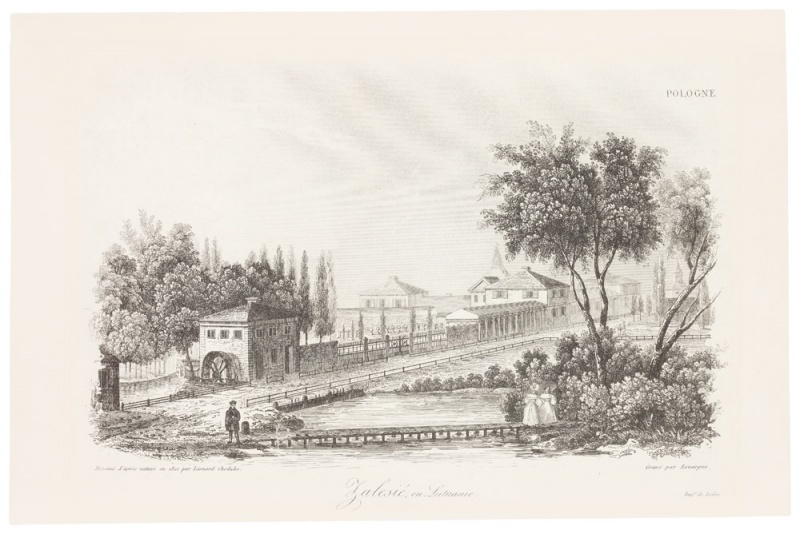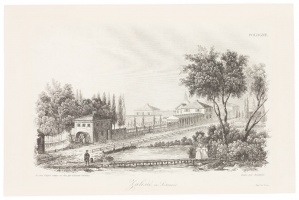
Zalesie in Lithuania
| Author: |
Adolphe Rouarque (1810–1870) |
| Created: | 1836 |
| Material: | paper |
| Technique: | steel engraving |
| Dimensions: | 15 × 22.80 cm |
| Signature: | bottom left: Dessiné d’aprés nature en 1822 par Léonard Chodzko bottom right: Gravé par Rouarque de L`Impr de Leclere |
CHODZKO LEONARD, LA POLOGNE HISTORIQUE, LITTERAIRE, MONUMENTALE ET PITTORESUE, PARIS, 1835–1847.
Steel engraving after Léonard Chodzko.
Views of the family homes or residences of important and famous people were almost a separate sub-genre of 19th-century landscape. The interest in these works is not based on the architectural value or the beauty of the houses (or not so much), but on the distinction of the people connected with them and their value to society. These aspects often clearly coincided or complimented each other. Usually printed as separate plates, they were mainly valued for their commemorative quality, and for this purpose the views they immortalised were drawn with documentary precision. The view of the house of Count Michał Kleofas Ogiński at Zalesie drawn from life in 1822 by his private secretary Leonard Chodźko (1800–1871) is an example of such a picture. An engraving based on the drawing was published several years later in the first volume (1836) of his famous work La Pologne historique, littéraire, monumentale et pittoresque as an illustration to an article about Zalesie (before p. 173). Michał Kleofas Ogiński, the last grand treasurer of Lithuania, a commander in the 1794 uprising, an honorary member of Vilnius University and a composer, settled at Zalesie in 1802 when he was granted an amnesty and returned from exile. He created most of his literary and musical compositions during the 20 years he spent there. Zalesie was a famous cultural centre at that time: the poet Aleksander Chodźko called it a Northern Athens. The drawing by Leonard Chodźko, however, leads us to think that the name was not only given to the estate to indicate the intellectual
life there, but also on the basis of its interesting Classical architecture.
Text author Rūta Janonienė
Source: Law firm Valiunas Ellex art album RES PUBLICA (2018). Compiler and author Rūta Janonienė






